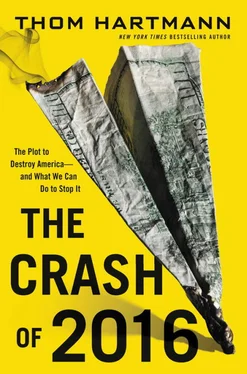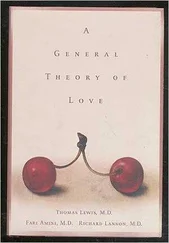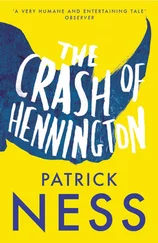But when the Great Forgetting finally came around, that wave, as Thompson had described it, finally broke, and then rolled back.
Lewis F. Powell Jr. was just sitting down to breakfast in his suite at the Waldorf Astoria Hotel in New York City, when he received a call from the White House.
The year was 1971—more than forty years since the last Great Crash. The sixties had ended and the Vietnam War had destroyed the Democratic Party, leaving Richard Nixon as president of the United States. And Nixon needed a favor.
A thin, ascetic man with wispy hair and fragile features, Powell had ancestral roots in America’s first European settlement, Jamestown, and a lifetime of participation in the law. He deeply loved his Richmond, Virginia, home, and the law practice he had there, which mostly consisted of defending corporate interests and wealthy Southern white men.
He walked comfortably, often in crepe-soled shoes, dressed as a Southern gentleman, and spoke so softly that people sometimes leaned forward to listen. But when he spoke, his words were precise, well measured, and carefully considered.
He was one of the most brilliant jurists of his day, and it’s no surprise that the Nixon White House was considering him for a seat on the Supreme Court, a job he turned down at first, but then, when Nixon called him again at the Waldorf Astoria, reluctantly accepted.
As a Supreme Court Justice, Lewis Powell was very much the moderate, and his legacy on the high court would reflect his balanced and authentic interpretation of the rule of law in America.
However, just a few months before he was nominated by Nixon, Powell had written a memo to his good friend Eugene Sydnor Jr., the director of the United States Chamber of Commerce at the time. And Powell’s most indelible mark on the nation was not to be his fifteen-year tenure as a Supreme Court Justice, but instead that memo, which served as a declaration of war—a war by the Economic Royalists against both democracy and what they saw as an overgrown middle class. It would be a final war, a bellum omnium contra omnes , against everything the New Deal and the Great Society had accomplished.
It wasn’t until September 1972, ten months after the Senate confirmed Powell, that the public first found out about the Powell Memo (the actual written document had the word “Confidential” stamped on it—a sign that Powell himself hoped it would never see daylight outside of the rarified circles of his rich friends). By then, however, it had already found its way to the desks of CEOs all across the nation and was, with millions in corporate and billionaire money, already being turned into real actions, policies, and institutions.
During its investigation into Powell as part of the nomination process, the FBI never found the memo, but investigative journalist Jack Anderson did, and he exposed it in a September 28, 1972, column titled, “Powell’s Lesson to Business Aired.”
Anderson wrote, “Shortly before his appointment to the Supreme Court, Justice Lewis F. Powell Jr. urged business leaders in a confidential memo to use the courts as a ‘social, economic, and political’ instrument.” 31
Pointing out that the memo wasn’t discovered until after Powell was confirmed by the Senate, Anderson wrote, “Senators… never got a chance to ask Powell whether he might use his position on the Supreme Court to put his ideas into practice and to influence the court in behalf of business interests.” 32
This was an explosive charge being leveled at the nation’s rookie Supreme Court Justice, a man entrusted with interpreting the nation’s laws with complete impartiality.
But Jack Anderson was no stranger to taking on American authority, and no stranger to the consequences of his journalism. He’d exposed scandals from the Truman, Eisenhower, Nixon, and later the Reagan administrations. He was a true investigative journalist.
In his report on the memo, Anderson wrote, “[Powell] recommended a militant political action program, ranging from the courts to the campuses.” 33
Powell’s memo was both a direct response to Roosevelt’s battle cry decades earlier and a response to the tumult of the 1960s. He wrote, “No thoughtful person can question that the American economic system is under broad attack.” 34
When Sydnor and the Chamber received the Powell Memo, corporations were growing tired of their second-class status in America.
Even though the previous forty years had been a time of great growth and strength for the American economy and America’s middle-class workers—and a time of sure and steady increases of profits for corporations—CEOs felt something was missing.
If only they could find a way to wiggle back into the people’s minds (who were just beginning to forget the Royalists’ previous exploits of the 1920s), then they could get their tax cuts back; they could trash the “burdensome” regulations that were keeping the air we breathe, the water we drink, and the food we eat safe; and the banksters among them could inflate another massive economic bubble to make themselves all mind-bogglingly rich. It could, if done right, be a return to the Roaring Twenties.
But how could they do this? How could they convince Americans to take another shot at what was widely considered a dangerous “free market” ideology and economic framework and that Americans once knew preceded each Great Crash and war?
Lewis Powell had an answer, and he reached out to the Chamber of Commerce—the hub of corporate power in America—with a strategy.
As Powell wrote, “Strength lies in organization, in careful long-range planning and implementation, in consistency of action over an indefinite period of years, in the scale of financing available only through joint effort, and in the political power available only through united action and national organizations.” Thus, Powell said, “The role of the National Chamber of Commerce is therefore vital.” 35
In the nearly six-thousand-word memo, Powell called on corporate leaders to launch an economic and ideological assault on college and high school campuses, the media, the courts, and Capitol Hill.
The objective was simple: the revival of the Royalist-controlled so-called “free market” system.
Or, as Powell put it, using Royalist rhetoric, “[T]he ultimate issue… [is the] survival of what we call the free enterprise system, and all that this means for the strength and prosperity of America and the freedom of our people.”
The first area of attack Powell encouraged the Chamber to focus on was the education system. “[A] priority task of business—and organizations such as the Chamber—is to address the campus origin of this hostility [to big business],” Powell wrote. 36
What worried Powell was the new generation of young Americans growing up to resent corporate culture. He believed colleges were filled with “Marxist professors,” and that the pro-business agenda of Harding, Coolidge, and Hoover had fallen into disrepute since the Great Depression. He knew that winning this war of economic ideology in America required spoon-feeding the next generation of leaders the doctrines of a free-market theology, from high school all the way through graduate and business school.
At the time, college campuses were rallying points for the progressive activism sweeping the nation as young people demonstrated against poverty, the Vietnam War, and in support of civil rights.
So Powell put forward a laundry list of ways the Chamber could retake the higher-education system. First, create an army of corporate-friendly think tanks that could influence education. “The Chamber should consider establishing a staff of highly qualified scholars in the social sciences who do believe in the system,” he wrote. 37
Читать дальше












